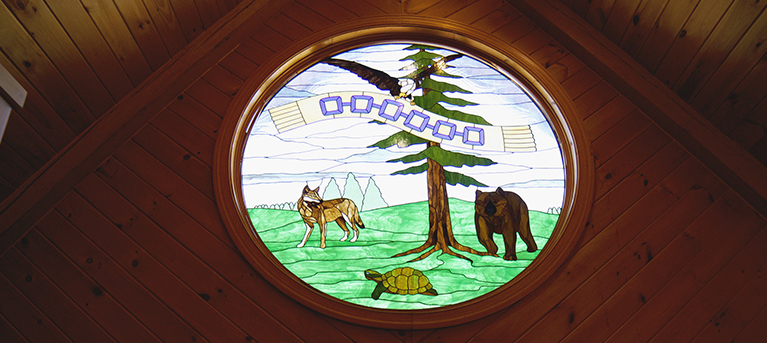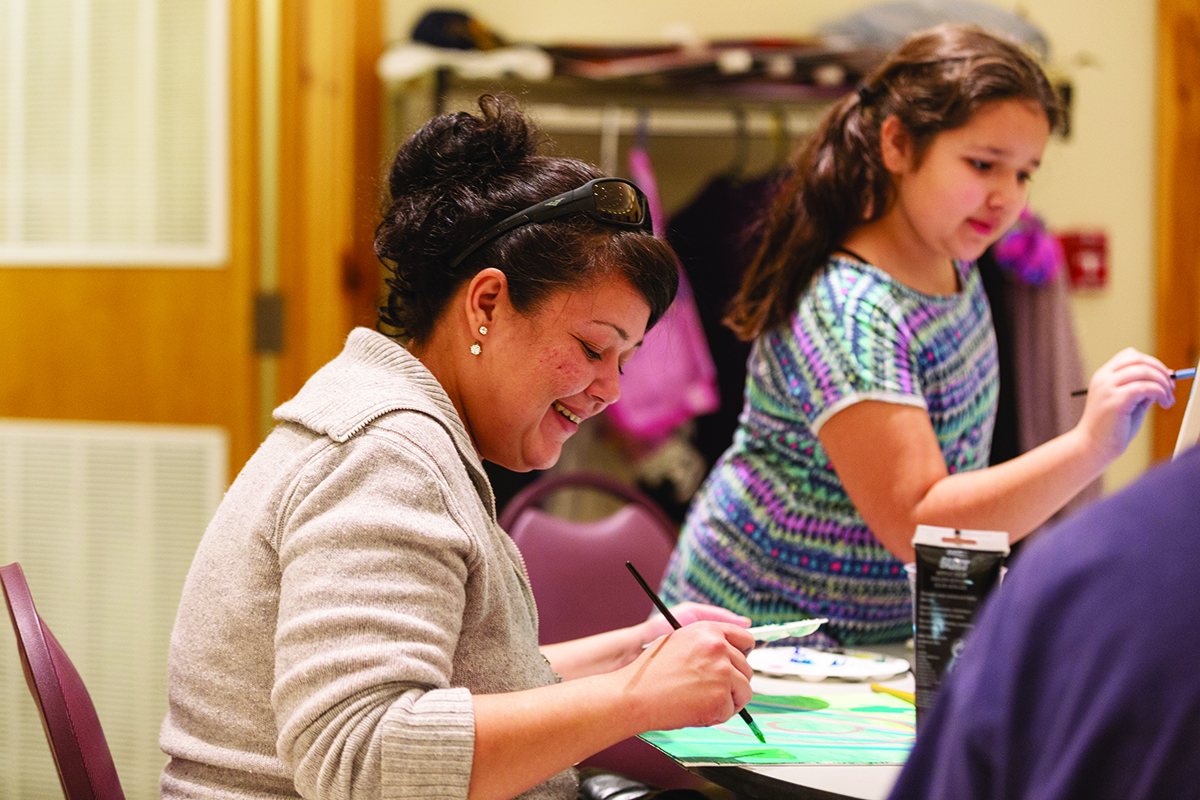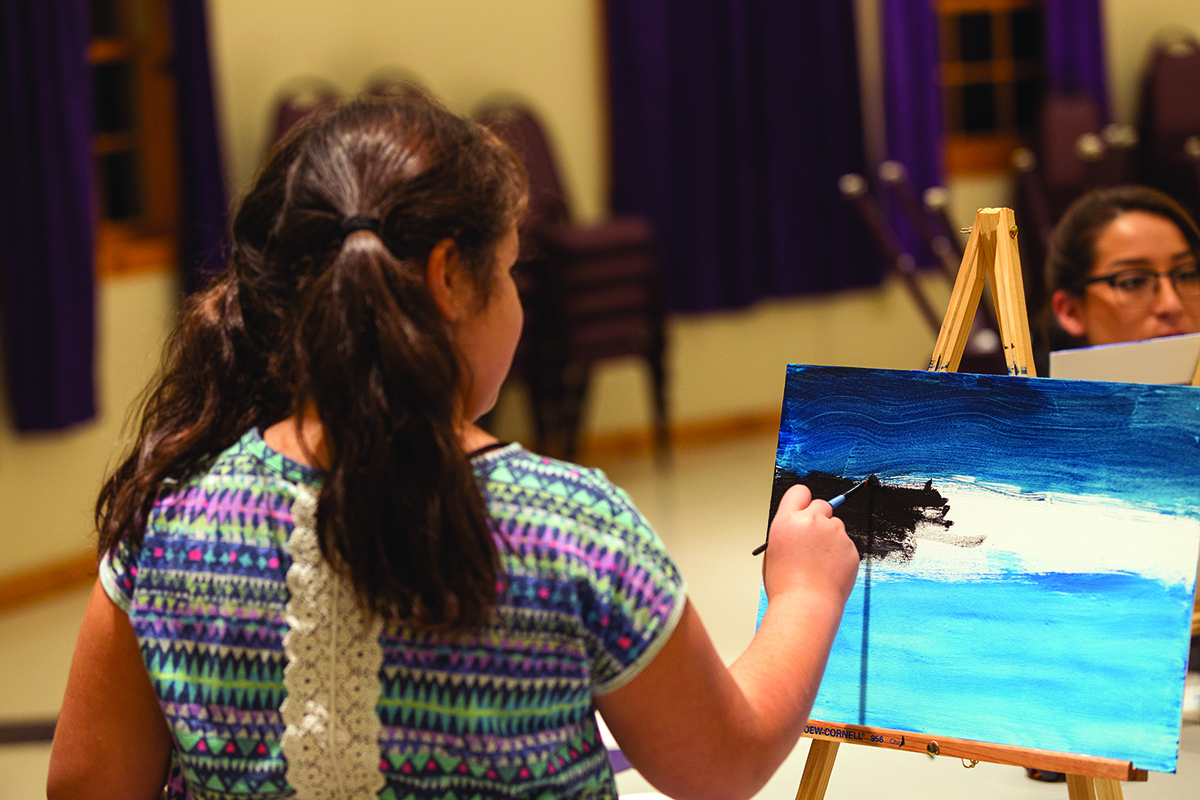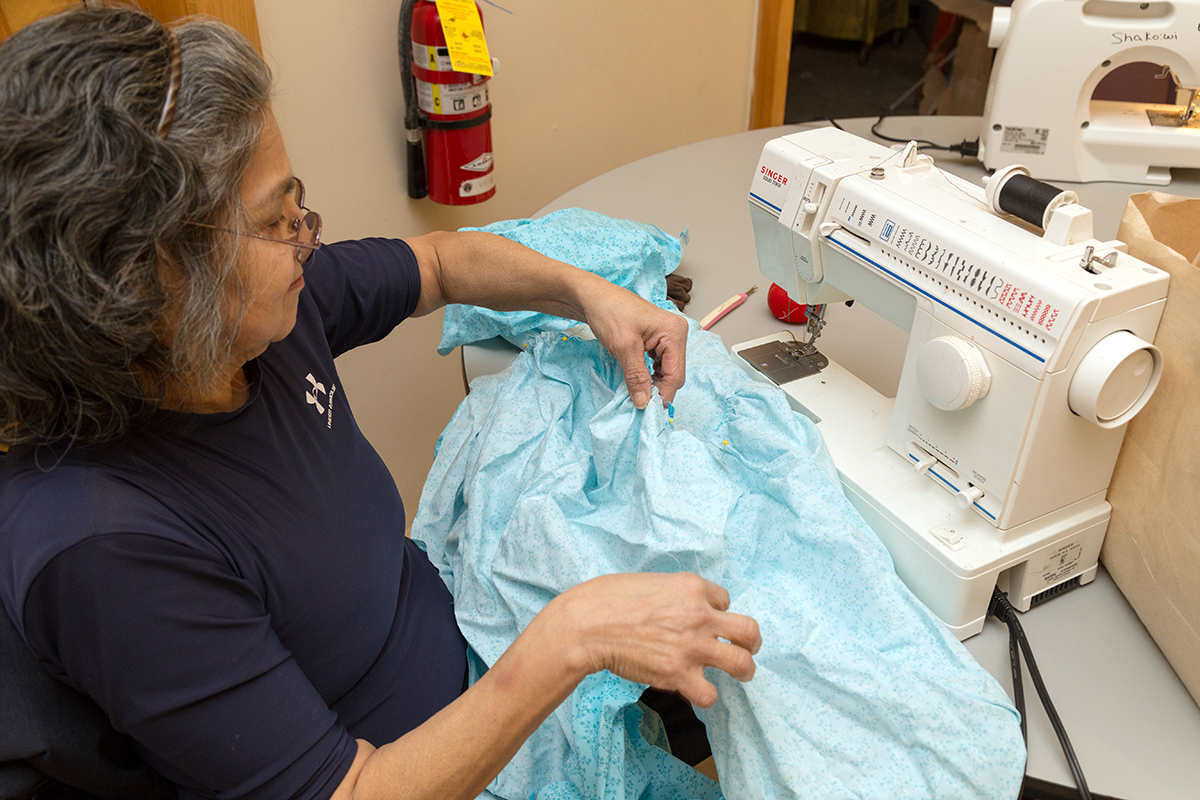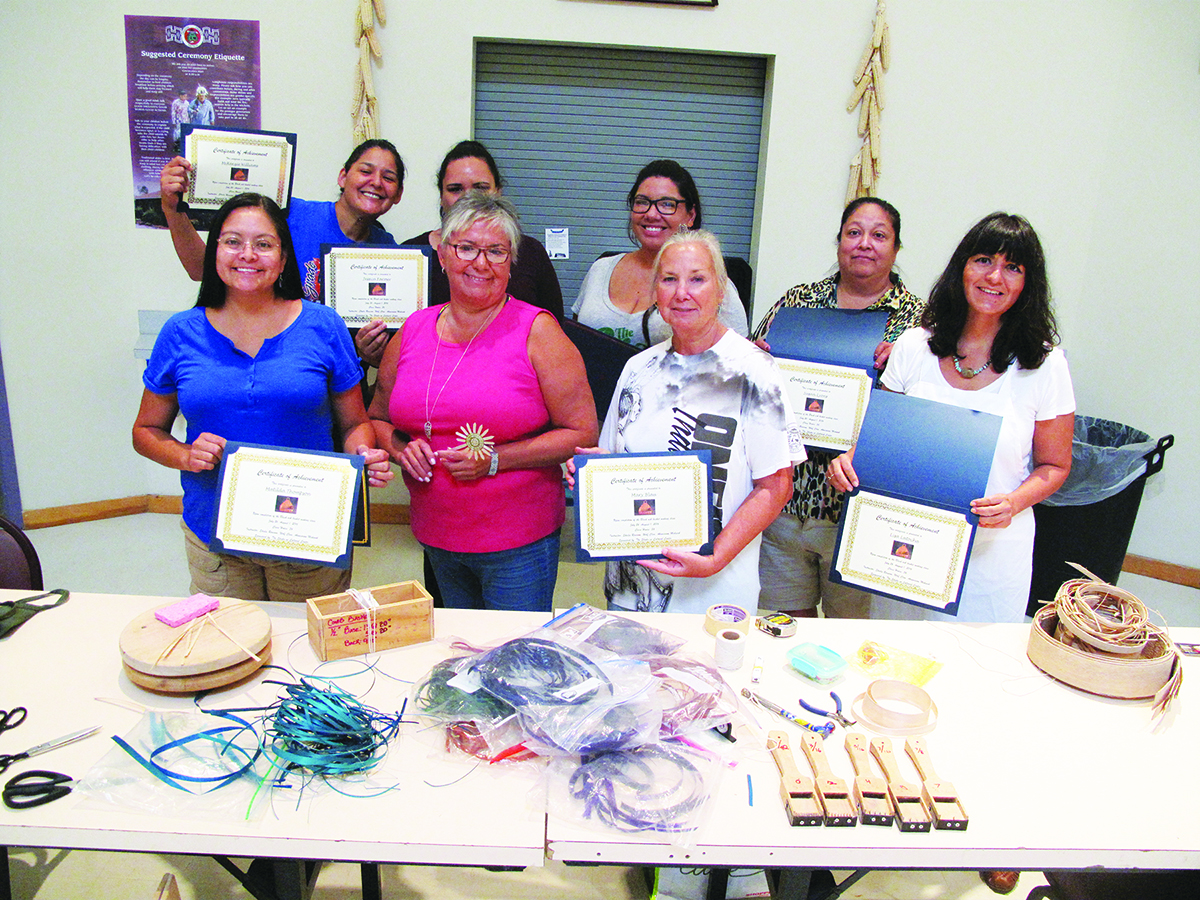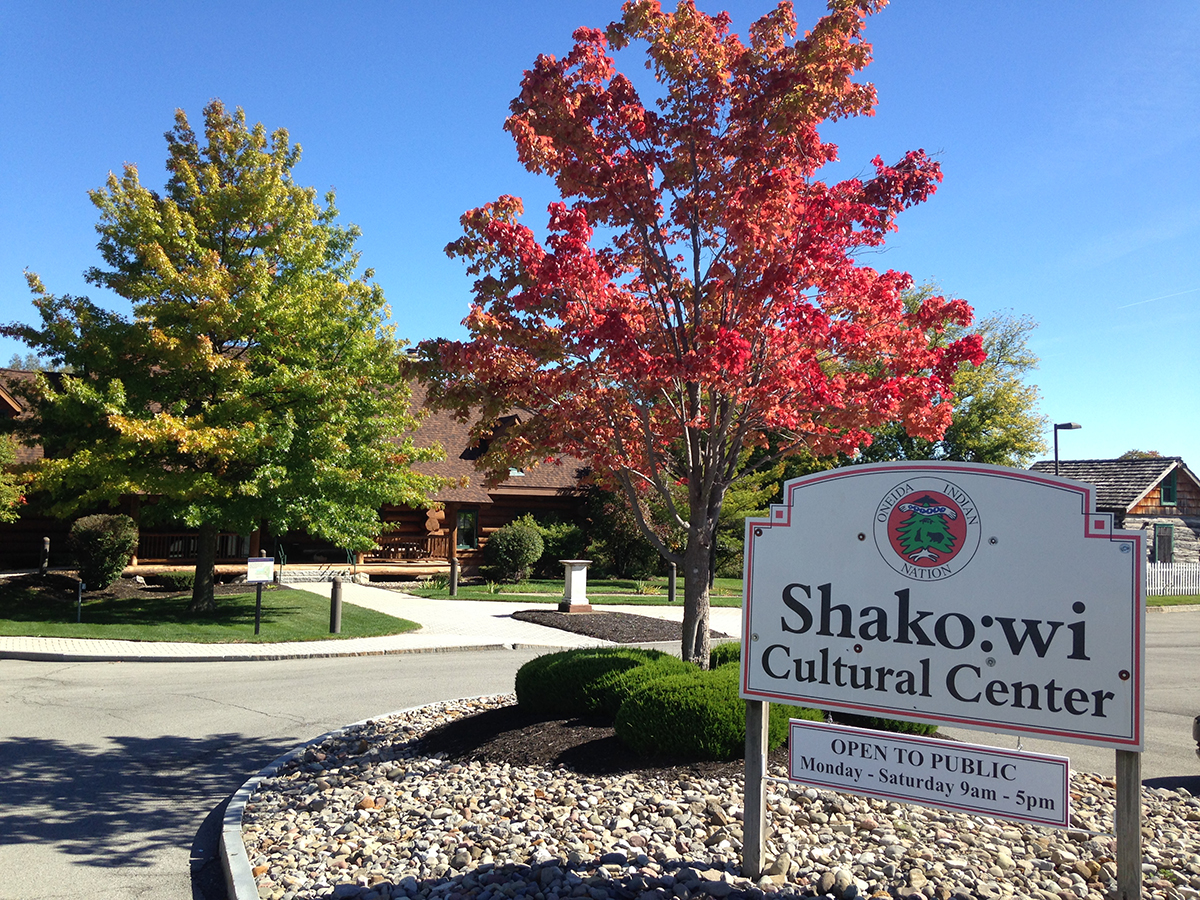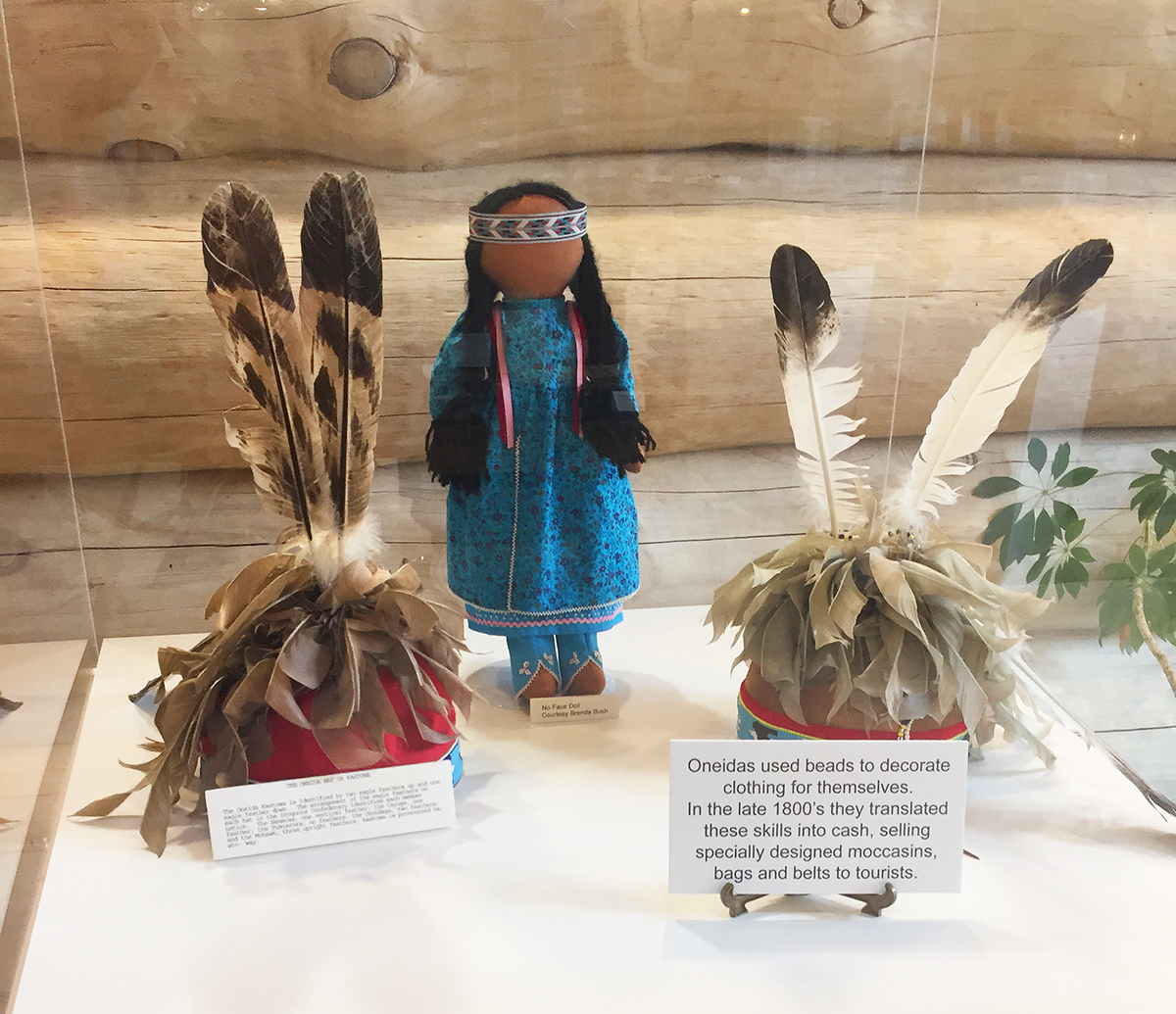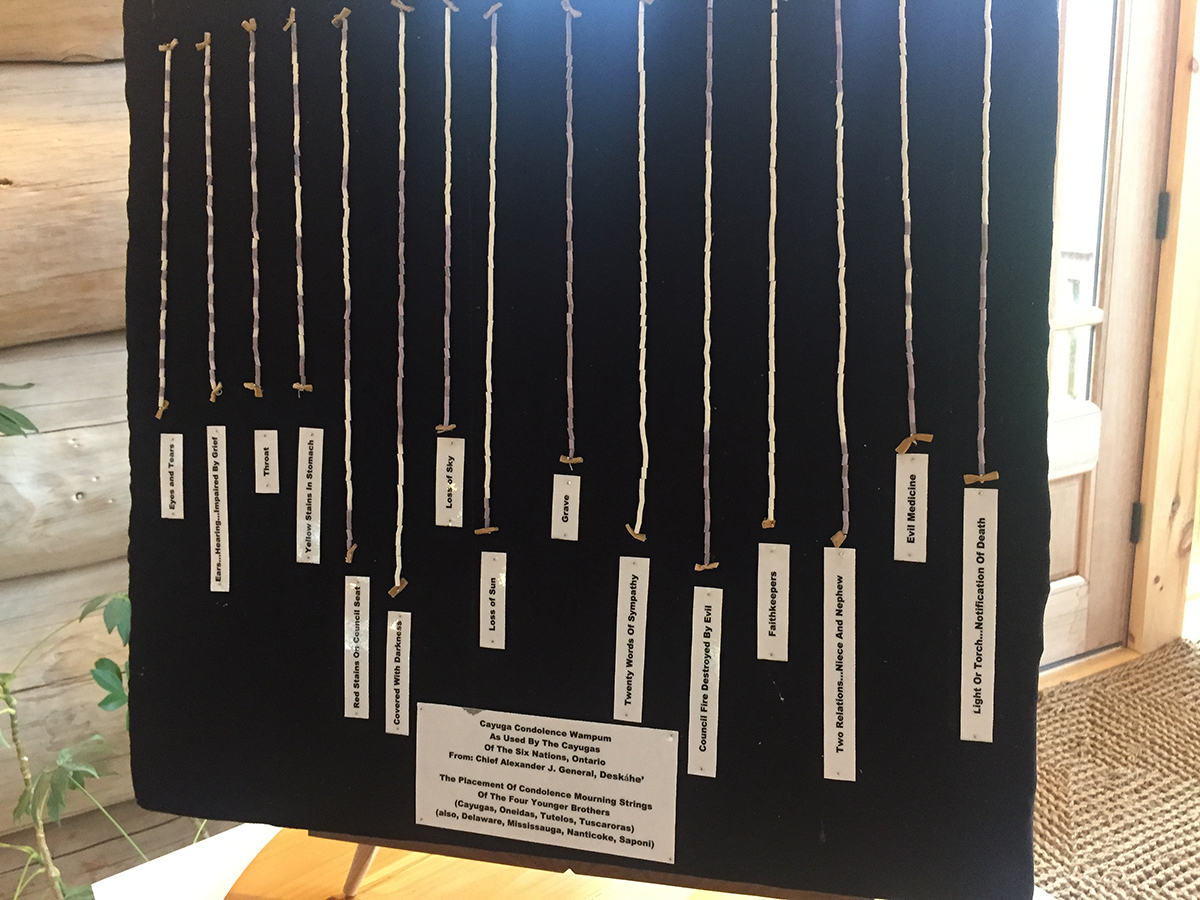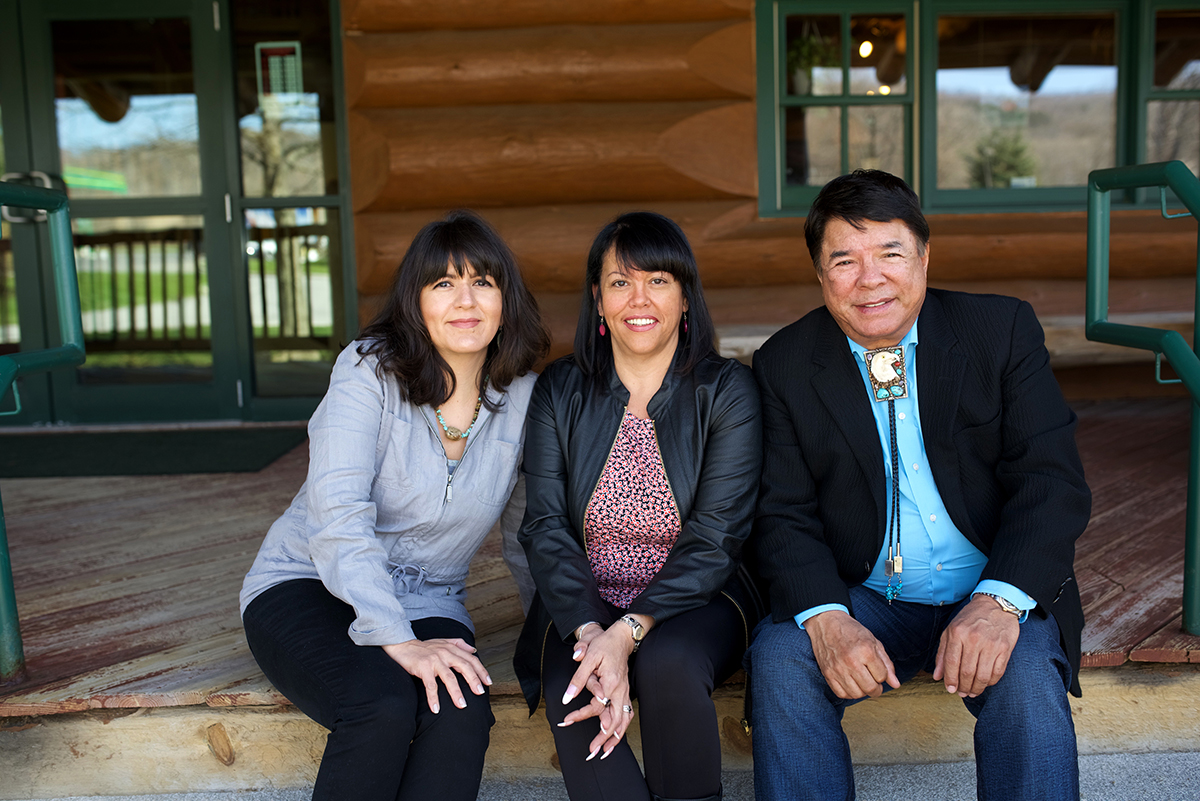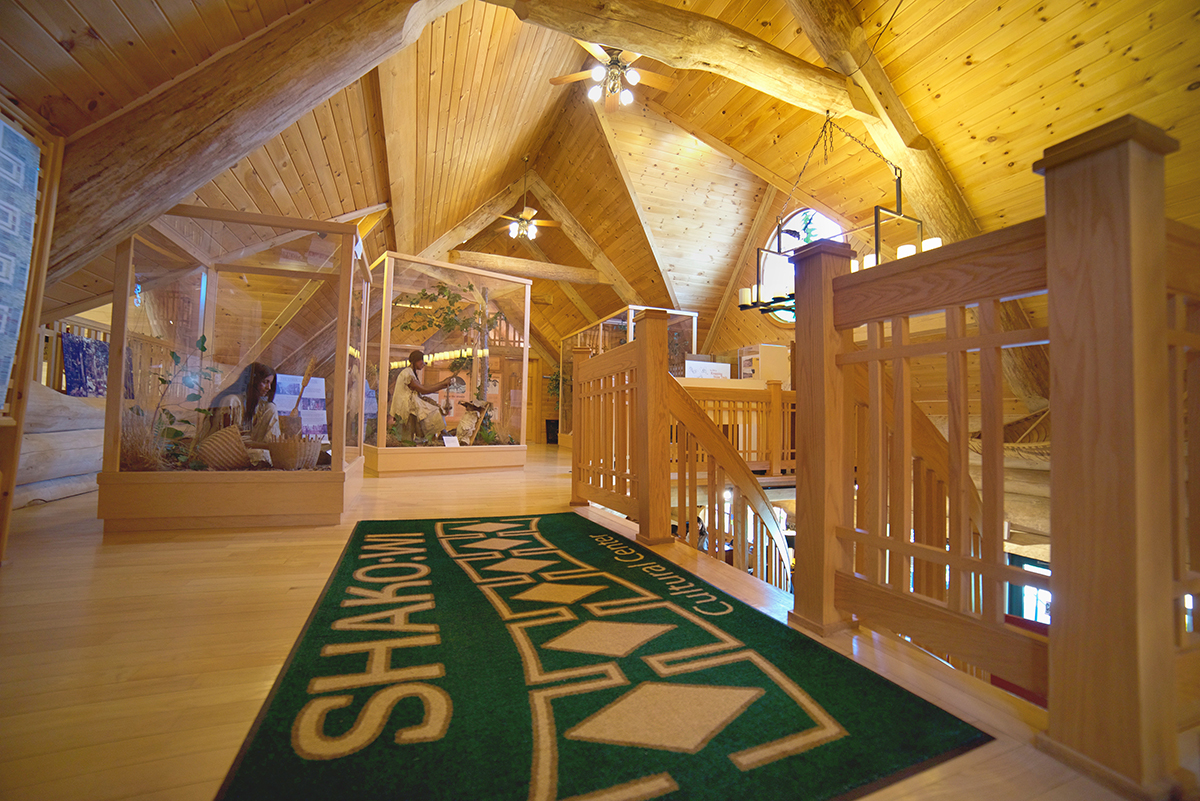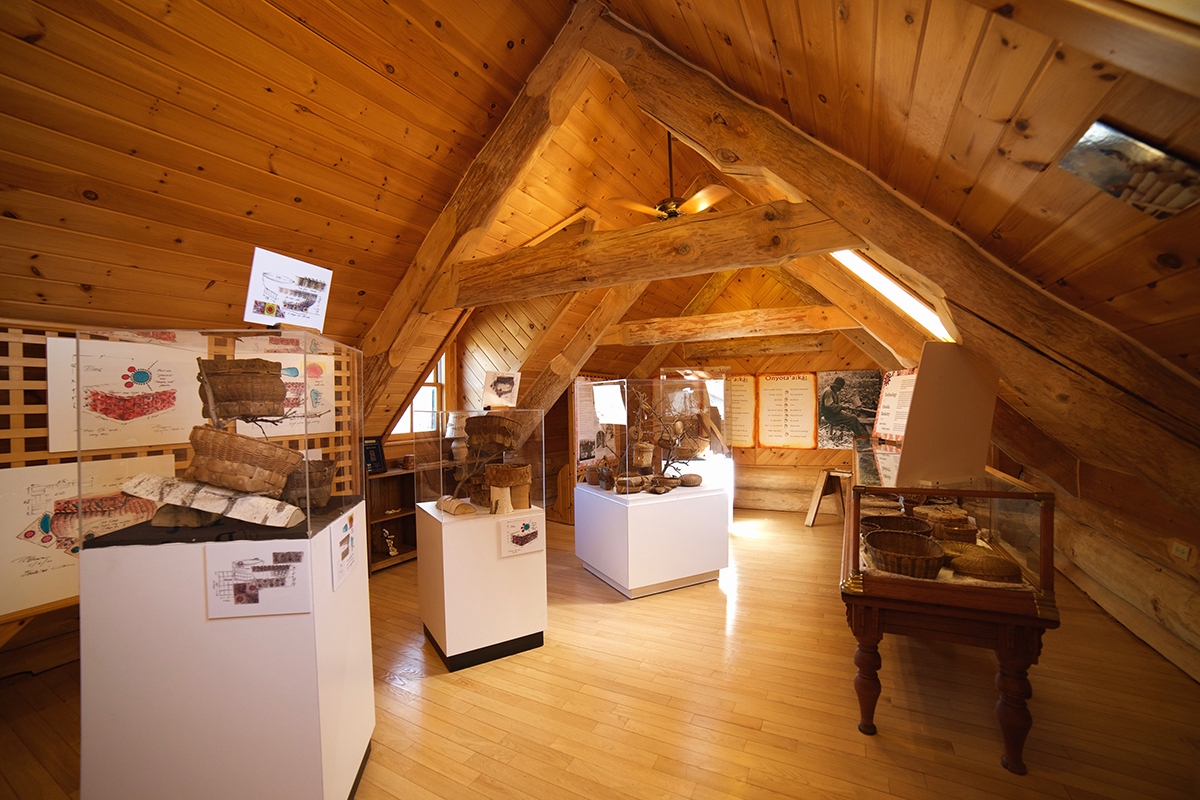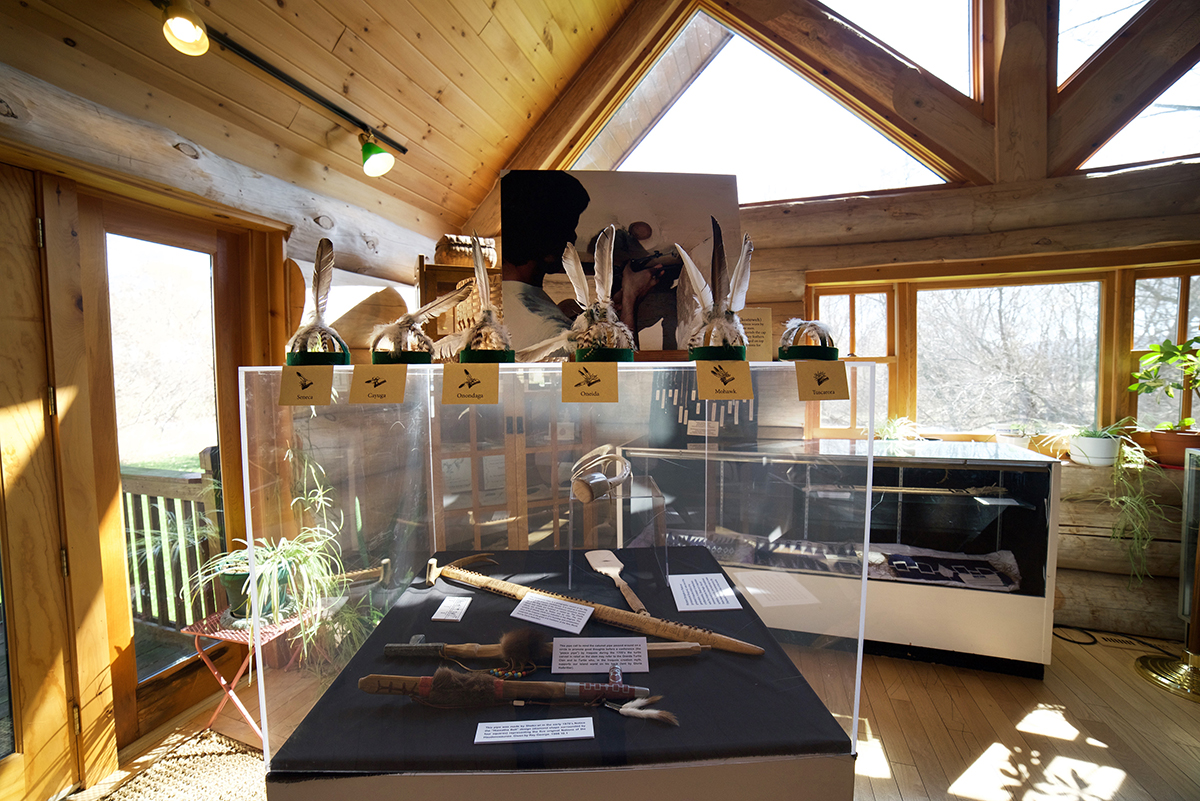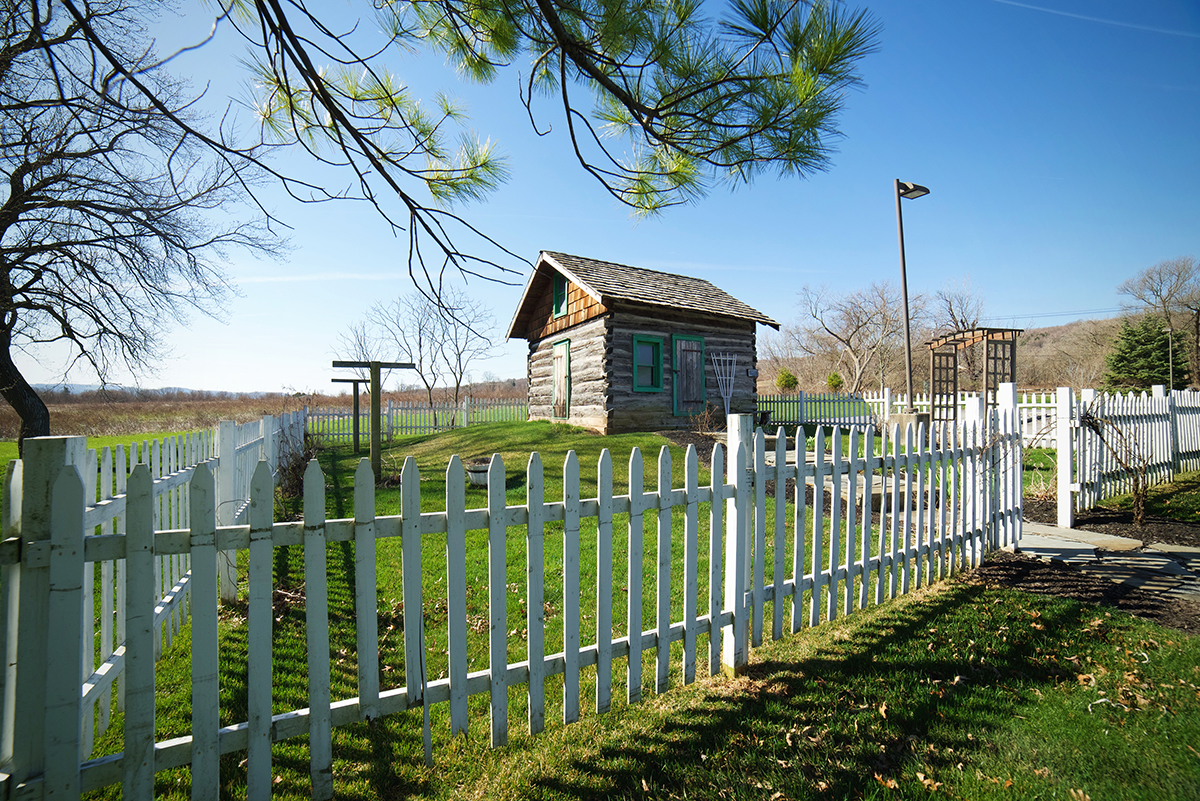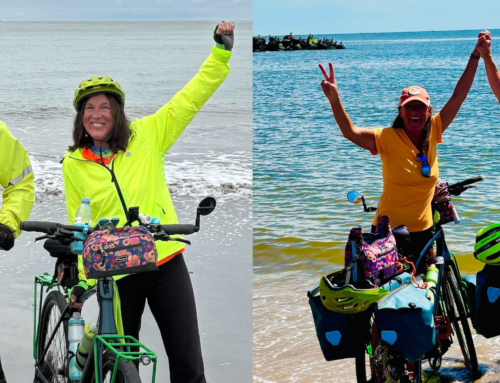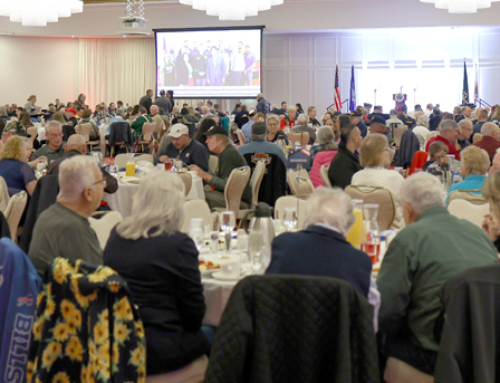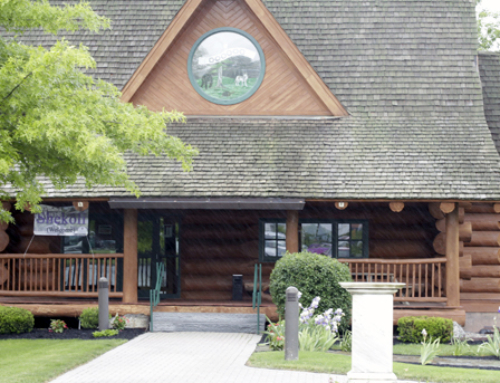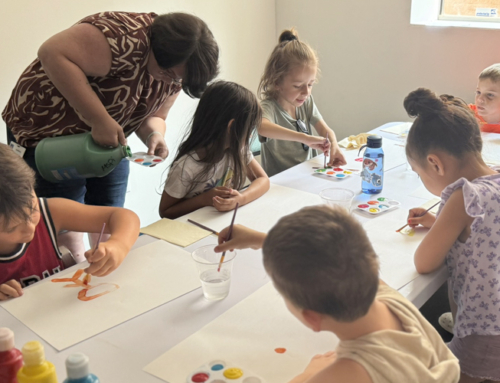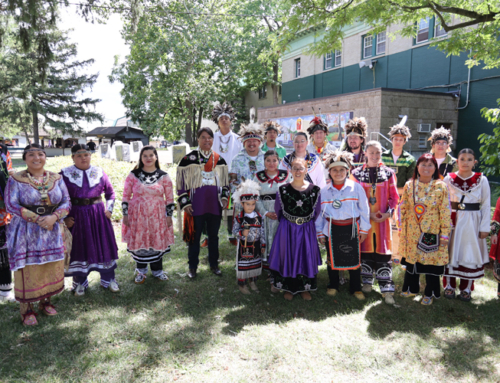The Oneida Indian Nation’s Shako:wi Cultural Center has become a landmark educational center showcasing several items of Oneida culture – from beadwork and cornhusk dolls to hand-made lacrosse sticks and historical artifacts. The center invites not only the American Indian community to learn more about Oneida culture, but also the local community and visitors to the region as well.
Richard Chrisjohn (Wolf Clan, 1921-1991), had the vision of building a cultural center on the Oneida homelands. Chrisjohn’s Oneida name – Shako:wi – means “he gives,” and that spirit of giving is the foundation of the center’s mission. The building is designed to give visitors and future generations a glimpse into the history and culture of the Oneida people.
An Educational Tool
The staff at the center work to ensure Shako:wi is a welcoming space where people can come and learn. And that includes children, too. Fourth grade classes from school districts all across central New York plan visits to Shako:wi to learn about how the original five nations of the Haudenosaunee Confederacy came together, why the Tuscaroras joined later and to get a glimpse into the culture which is as alive today as ever.
Teachers use trips to Shako:wi either as a starting point or conclusion for lessons on American Indian culture. On average, more than fifteen classes visit the center annually, typically near the end of the year or during Native American Heritage Month in November.
The center continues to do a lot of outreach, but would like to reach the more immediate community in and around the city of Oneida. Staff are still told by visitors they had no idea the building even existed. But the center’s reach and interest extends even beyond central New York. Groups from out of state consistently visit Shako:wi and recognize its important role in preserving and sharing American Indian culture.
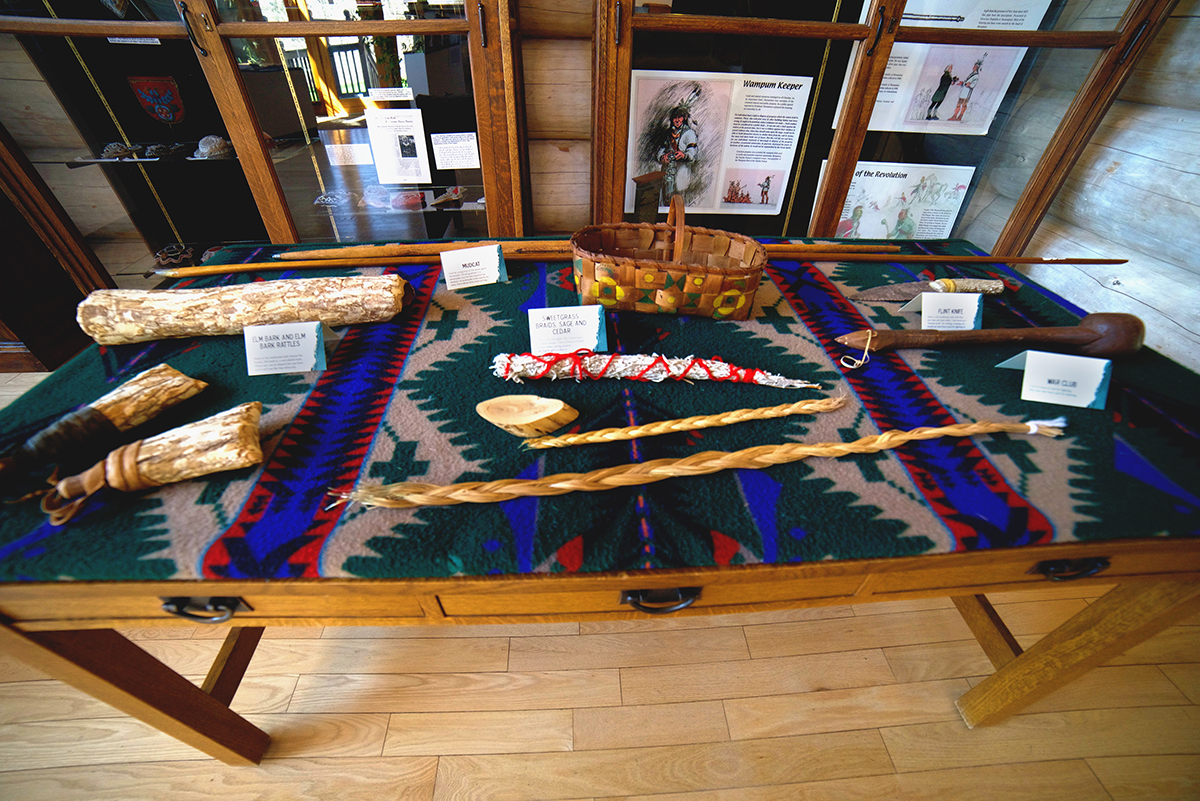
Community Continues Cultural Traditions
In addition to its role as a museum, the cultural center also promotes numerous community programs and classes for Oneida Members and Health Services clients. Jessica Farmer leads several how-to classes that include beadwork, cornhusk dolls, regalia, painting and working with quills.
Farmer has been working at the Nation for more than half her life. “My mom used to work here so I kind of grew up in this building,” she says. “The sense of community and family is what makes this place special to me.”
Beading is a craft Farmer admires. She says the technique beaders use and the evolution of the art itself is simply amazing. Other activities that are popular, especially with the kids, are creating cornhusk dolls and storytelling at the Nation’s Cookhouse.
“Kids really get into the storytelling,” Farmer says. “They know the Three Sisters and have interesting interpretations when we paint the legends.”
Among the many exhibits featured at Shako:wi is one on Chief Rockwell. Chief William Rockwell wore his western-style headdress in public because, at the time, that is how non-Natives expected all American Indians to dress. The cultural tradition of the headdress can be explained through Chief Rockwell’s shared experience.
The history of lacrosse, and more specifically the evolution of the lacrosse stick, is the most recent exhibit at the center. “Ká:lahse’ – a Haudenosaunee Tradition” offers visitors a look into how the traditional game of lacrosse was played by the Oneidas and how it affected today’s game. Wooden lacrosse sticks line the wall of the exhibit with information detailing how they are made.
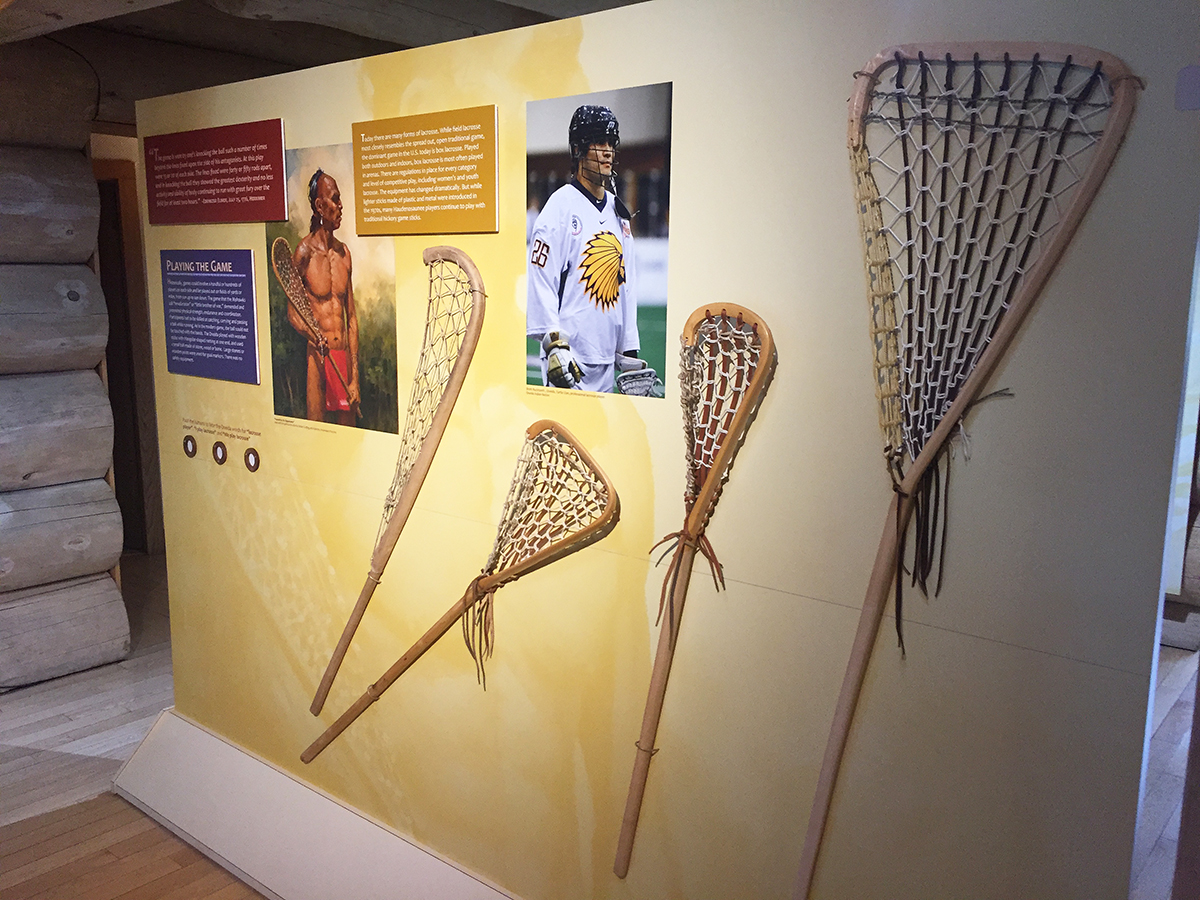
Shako:wi Looks to the Future
The center is always looking for more historical items to put on display. That gives the center an opportunity to update its collection and put together new exhibits regularly. Items from Shako:wi are also on display at Oneida Indian Nation Health Services so patients in the waiting area can share in some of the Oneida culture.
The staff continues to manage the several historical and cultural artifacts on display in addition to providing educational and community-oriented programs to promote Oneida culture.


